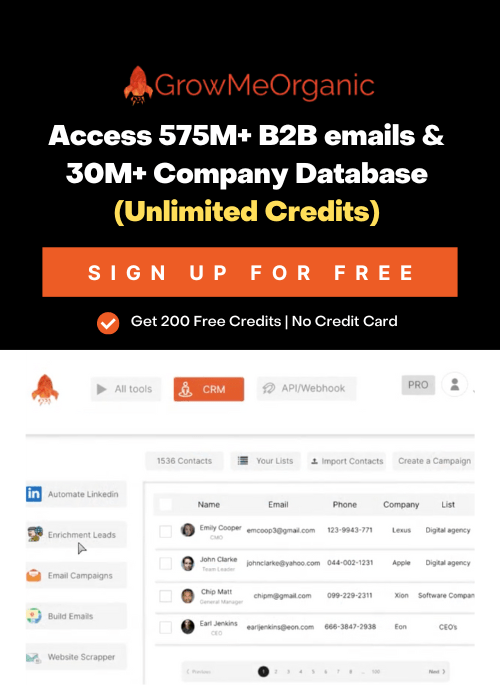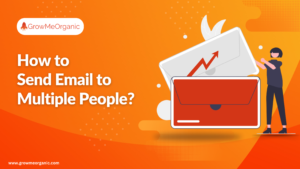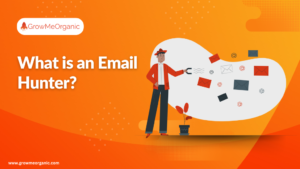Email list segmentation boosts conversion rates by targeting specific audience subsets with tailored messages. This approach personalizes communication, enhances relevance, and increases engagement, leading to higher click-through rates and sales.
Segment your email list to communicate effectively and convert leads into loyal customers. Instead of sending generic emails, categorize your audience. Personalized emails based on segmentation can yield a 760% return on investment.
So, what is this email segmentation all about? Let‘s find out.
What is Email List Segmentation?
Email list segmentation means grouping subscribers based on shared traits like age, interests, or actions. Think of it like trading a shotgun for a sniper rifle—less spray, more precision. By sending the right message to the right people, you boost engagement and conversions.
Precision beats guesswork every time. Message received! But how can you segment your email database? Let’s find out!
4 Steps to Create Email List Segmentation
Use email marketing software to segment your list efficiently. Set parameters to categorize emails and integrate the software with your CRM for seamless data management. Follow these simple steps to segment your database and optimize communication with your audience.
Step 1: Set the Criteria.
Start audience segmentation by deciding how to group them using data like location or browsing behavior. Then, follow your criteria to collect customer data.
For instance, e-commerce might segment by purchase history, while B2B could focus on industry type. Tailor your approach to fit your business needs.
Step 2: Collect Data and Create a Workflow
Gather customer data using sales outreach tools or CRMs like GrowMeOrganic. Integrate with your website to track visitor actions and demographics for targeted email segmentation. Once you have enough data, set up automated workflows in your CRM to segment subscribers effortlessly.
To keep your system running smoothly as your database grows, incorporating Salesforce data archiving solutions can help manage older or less active data without compromising performance or accessibility.
For instance, automate list additions whenever a user completes specific actions on your site.
Step 3: Create Tailored Content for Email Segments
Design content that aligns with each segment’s unique traits.
For instance, adapt language for younger audiences versus older ones to ensure your message resonates.
Step 4: Measure Metrics and Test Campaigns
Track metrics like open rates and conversions to gauge your email’s performance. Continuously test campaigns, messaging, and segments to refine your strategy and ensure you’re effectively reaching the right audience.
So far, the steps are simple to achieve. But, is it worth the time and resources? Check how your business can benefit from B2B email list segmentation.
How Email List Segmentation Can Benefit You?
Email segmentation benefits businesses by delivering personalized content to specific audience groups. It increases engagement, improves open and click-through rates, and enhances customer loyalty.
Segmentation also boosts conversion rates and ROI by ensuring messages resonate with recipients’ needs and preferences, fostering stronger connections with your audience.
Here is how segmenting email lists can benefit your business.
More Refined Campaign Performance
Email segmentation boosts campaign performance by tailoring content to specific groups, ensuring relevance and higher engagement. This approach leads to:
- Higher open rates: Personalized subject lines attract attention.
- Increased clicks: Targeted emails align with individual interests, encouraging action.
- More conversions: Relevant content motivates subscribers to become customers.
Generic emails often lead to unsubscribes due to a lack of personalization. Segmented emails stand out, capture attention, and drive better results by meeting specific needs.
Enhanced Deliverability
Segmenting your email list helps maintain a strong sender reputation, ensuring your emails reach inboxes, not spam. ISPs assign scores based on engagement and content quality.
Low-quality content or uninterested recipients hurt deliverability. By targeting the right audience with relevant content, you signal to ISPs that your emails are valuable, improving deliverability and avoiding the risk of being marked as spam.
Personalized and Targeted Promotions
Email segmentation lets you send personalized promotions based on customer interests or behaviors. By defining customer personas, you can create content that drives conversions.
Here is an example of how an email addressing personal benefits is sent to a user who has bought spectacles.
So, identify loyal customers and make a targeted email list. Provide exclusive offers that boost loyalty and increase revenue. Tailoring promotions ensures you’re meeting the specific needs of different segments. Your campaigns will become more effective.
Enhanced Customer Experience
Segmenting your email list personalizes the customer experience. By tracking subscriber actions, such as downloading an e-guide, you can better understand their needs and deliver relevant content. This approach guides customers through their journey, increasing conversion rates by providing timely, relevant information that fosters satisfaction and loyalty.
Increase Your ROI
Email segmentation boosts ROI by delivering relevant content that aligns with customer needs and interests. This strategy increases engagement and conversion rates, as personalized emails encourage recipients to click through and visit your site.
Segmentation enhances marketing success and maximizes ROI by addressing diverse motivations and preferences. A proper email list segmentation plan is essential for your campaign’s success; without it, efforts may lack precision and impact.
10 Best Ways to Segment Your Contact Database
Businesses define their criteria to segment an email database uniquely. However, here is a list of generic approaches to follow.
Based on Demography
Demographic data like age, gender, income, and family status help businesses segment their audience effectively.
For example, if you sell beauty products, you’ll target women of a particular age range, profession, etc. Adjusting messaging based on gender or other demographics ensures that your content resonates with the right people for your products.
New Subscribers
New subscribers need attention right away. Instead of letting them fade, send a warm welcome email to introduce your brand.
Use tools like exit-intent popups to capture visitors before they leave your site and convert them into subscribers. By engaging with them early, you increase the chances of turning them into loyal customers.
For example, Lululemon adds the benefits of a new subscriber in their welcome emails.
Geographical Location
Geographical segmentation helps you target people based on where they live, like their city, country, or even time zone.
For instance, certain products may be more popular in specific regions. It also helps B2B businesses customize emails to regional sales teams to make communication more relevant and effective.
Buyer’s Persona
Customer personas are detailed, fictional profiles that represent your ideal customers. They help you better understand your target audience.
For example, if your persona is a woman in her 20s who loves pets, beauty, and reading, you can use this information to create products and marketing strategies that appeal directly to her.
For instance, this email is an example of how purchase choices are noted and an email is sent.
Edith Emebu explains how a buyer’s persona is crucial for email segmentation.
“Consumers today are smart. They do their research before doing anything else. They know who your competition is, and they’re all too ready to jump ship and move to them if they have to”
Buying Behavior or Purchase History
Behavioral segmentation focuses on user actions, like website visits and purchases, to send targeted emails. It helps you:
- Segment based on past purchases and send related offers.
- Use cart abandonment emails to remind customers of items left behind.
- Target visitors based on the pages they’ve viewed, even if they haven’t bought yet.
For example, Audible emails users who have added audible books to their wishlists.
By understanding customer behavior, you can send more relevant, personalized campaigns that encourage return visits and conversions.
Interaction with Emails
Segmenting by email activity helps you target customers based on their email engagement. Look at metrics like open and click-through rates to gauge interest. You can:
- Focus more on engaged users with relevant content.
- Re-engage inactive subscribers using promotions or preference surveys.
Write the emails suited to their engagement level to reduce unsubscribes and increase the chance of returning lost customers. At specific points, let the inactive subscribers go to refine your email lists.
Type of Organization and Industry
For B2B businesses, segmentation should consider the type of organization you’re targeting. You can segment by:
- Company size: Tailor content for small vs. large businesses.
- Industry: Customize emails for different sectors, like manufacturing or e-commerce.
Alex Tkachuk explains how relevant emails can help connect businesses with their targeted audiences.
“Nowadays, your email should radiate relevancy and knowledge of your leads’ industry trends, potential pain points, and exact solutions for those pain points. Only if you’re convincing enough that your offering can bring value – will they consider talking (and I’m speaking about talking specifically, selling itself is a whole other form of art that also takes a lot of due diligence)”
Address the unique needs of each organization type to create more relevant content. It increases the chances of engagement from businesses in specific niches.
Funnel Stage
Segmenting your email list by the stage of the sales funnel helps tailor your marketing efforts. For example:
- Awareness Stage: Send introductory content to educate about your brand and offerings.
- Decision Stage: Provide detailed reasons to choose your product, like testimonials or special offers.
Target customers based on their stage of the buying process to create more relevant, persuasive emails that move them closer to conversion.
Shopping Destinations
If you have both a physical store and an online shop, segment customers based on where they shop. You can create specific offers for each group and send relevant emails. For example:
- Brick-and-mortar customers: Send offers related to in-store promotions.
- E-commerce customers: Focus on online deals and updates.
This segmentation also helps cross-promote between stores. It can drive traffic to the other locations and keep customers informed, especially if the focus shifts from one to the other.
Customer Profile
If your business serves different types of customers, segment them based on their needs. For example, if you sell accounting software, you might have:
- Consumers: Send simple, user-friendly tips.
- Business owners: Share more technical, industry-specific advice.
This ensures your content resonates with the right audience, avoiding confusion and increasing engagement by offering the most relevant information to each group.
A well-segmented email list is what you need to make your campaigns successful. For that, you need a vivid email marketing tool to set the parameters right.
Why Should You Use GrowMeOrganic For Email List Segmentation?
GrowMeOrganic makes email segmentation easy and efficient. Create your email list from our vast B2B database by creating an ideal customer profile template and segmenting it accordingly.
Integrate our platform with your CRM to define your email segments based on customer data, behavior, and demographics. Whether you’re targeting new subscribers, loyal customers, or specific regions, GrowMeOrganic helps you create personalized campaigns that resonate with each group.
Make every email campaign count.
Sign up for a 14-day free trial and convert your leads into loyal customers.
FAQs related to Email List Segmentation
Q.1. Why should I segment my B2B email list?
Segmenting your B2B email list helps you:
- Target specific industries or company sizes
- Increase engagement with personalized content
- Improve conversion rates with relevant offers
- Enhance deliverability by sending tailored emails
- Save time and resources with focused campaigns
Q.2. How do email lists differ from email segments?
An email list is a collection of all subscribers, while email segments are smaller, targeted groups within that list based on shared traits or behaviors, allowing for more personalized and effective campaigns.
Q.3. What factors should I prefer when creating a B2B email marketing strategy?
To create a B2B email marketing strategy, consider these factors:
- Target audience and their needs
- Segmentation criteria (industry, company size)
- Personalization and relevant content
- Clear call-to-action
- Consistent and timely email schedule
- A data-driven approach to improvements
Q.4. Is there any tool to segment an email contact list?
Yes, GrowMeOrganic helps segment email lists by demographics, behavior, and engagement, allowing businesses to send more targeted, personalized campaigns and improve conversion rates.
Q.5. Does email segmentation help in sales funnel strategies?
Yes, email segmentation enhances sales funnel strategies by sending targeted messages at each stage. It helps nurture leads, boost engagement, and convert prospects into customers by delivering personalized content based on their interests and behavior.
About Post Author
Anant Gupta
Growth Hacker, Marketing Automation Enthusiast & Founder of GrowMeOrganic







